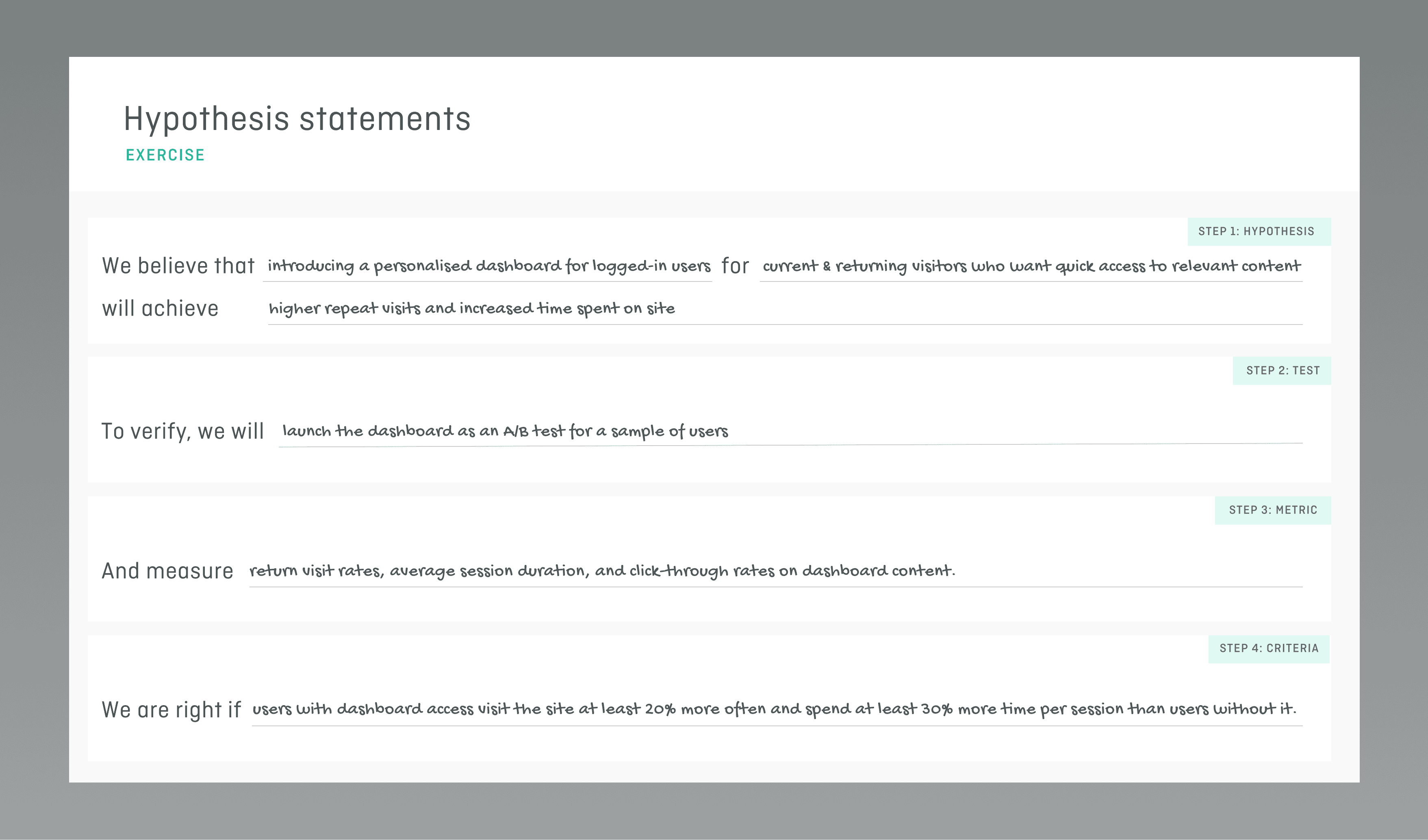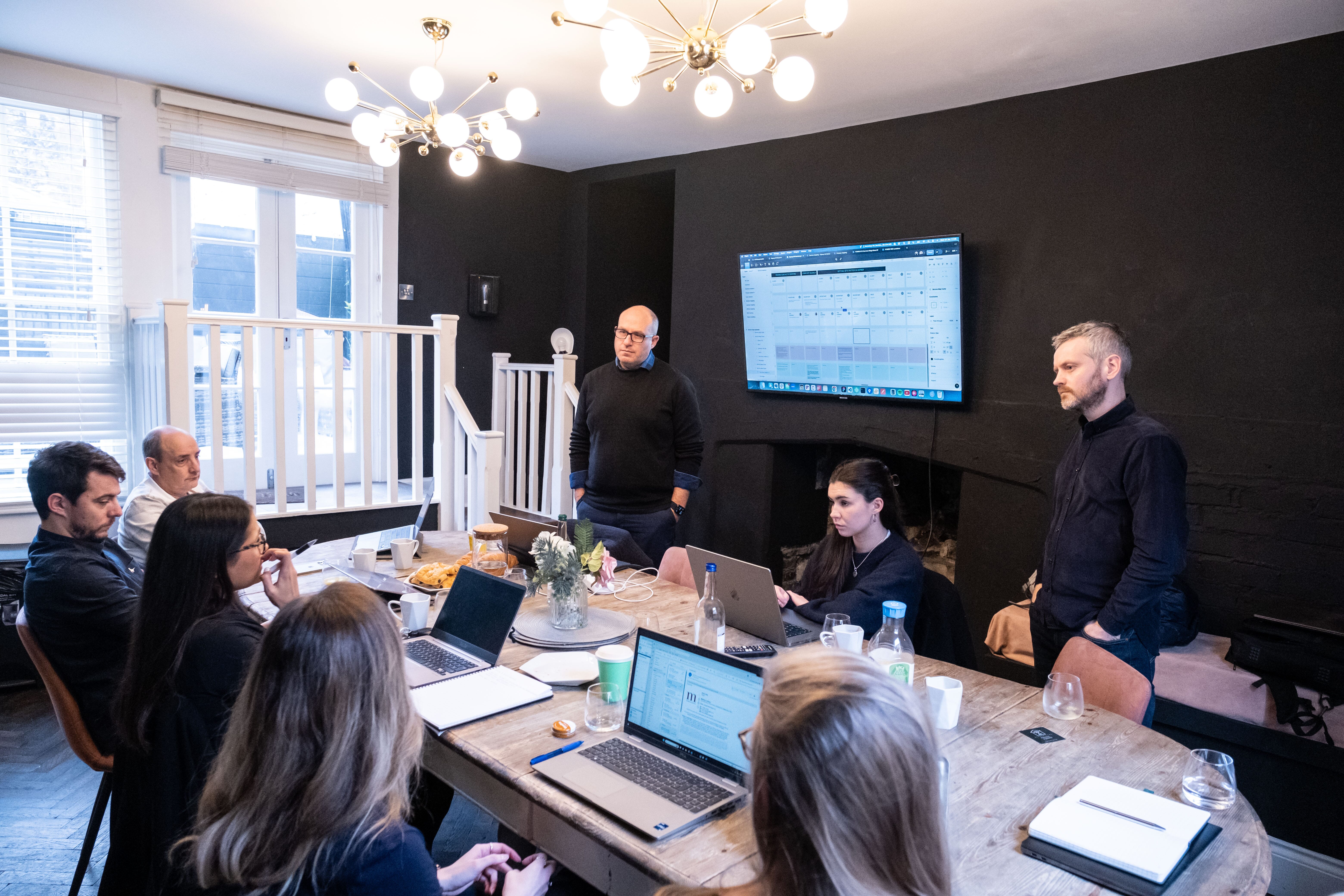Defining clear expectations and focus
Setting hypothesis statements at the start of a project establishes specific expectations and sharpens the focus for research and testing activities. We can use these statements as a foundation, helping teams structure their testing around targeted questions rather than broad, aimless exploration. By clearly articulating which assumptions need validation, hypothesis statements ensure that research efforts are efficient, relevant, and aligned with business goals from the beginning of the testing process.
For example, in practice, a hypothesis might predict that users will find a new navigation menu easier to use than the previous design, or that adding a feature will increase task completion rates. These focused questions help direct both the design of tests and the interpretation of results.





